
New York City Ballet
All American: Who Cares?, Fearful Symmetries, West Side Story Suite
Washington, Kennedy Center Opera House
April 3-8, 2012
www.nycballet.com
Titled All American, the first of two programs presented by New York City Ballet during its week-long engagement at the Kennedy Center Opera House in April was dedicated to American music, featuring compositions of George Gershwin, John Adams, and Leonard Bernstein.
George Balanchine’s 1970 ballet, Who Cares?, which opened the evening is a heartfelt salute to New York and Broadway, Gershwin and Fred Astaire, and to romance and love in the Big City of Dreams. For the music Balanchine used a selection of songs by George and Ira Gershwin from 1922 to 1931. The lyrics were dropped and the music was orchestrated by Hershy Kay according to Gershwin’s own arrangements for the piano.
The catchy title, like the ballet itself, suggests the era of the twenties, when American musical comedy was at its best. Choreographed as a collection of dances, varied in scale and character, including big strutting ensembles, romantic duets, and dazzling solos, Who Cares? encompasses the best traditions of American show dancing. I cannot think of any other work which makes the classical ballet idiom look so intrinsically American.
With the nocturnal skyline of Manhattan as its backdrop, the ballet opens with a swaggering ensemble of women in shiny little dresses and stylishly clad men, dancing with a perfect mix of glamour and sophistication. (The original stylized street costumes by Karinska had been replaced by the chic attire designed by Ben Benson when Balanchine revamped the production in January, 1983. “This is now a sexier ballet,” wrote The New York Times after the premier of the ballet’s new version.)
In the vibrant, boasting ensembles of the ballet’s first part, Balanchine wondrously captured the spirit of the Jazz Age by incorporating into his choreography the elements of social dances of the 1920s such as the Charleston and the foxtrot. On opening night, the supporting cast, which included 10 ballerinas of the corps and five demi-soloist couples, performed with gusto, evoking a Broadway chorus line. A quintet of men in “Bidin’ My Time” was particularly impressive.
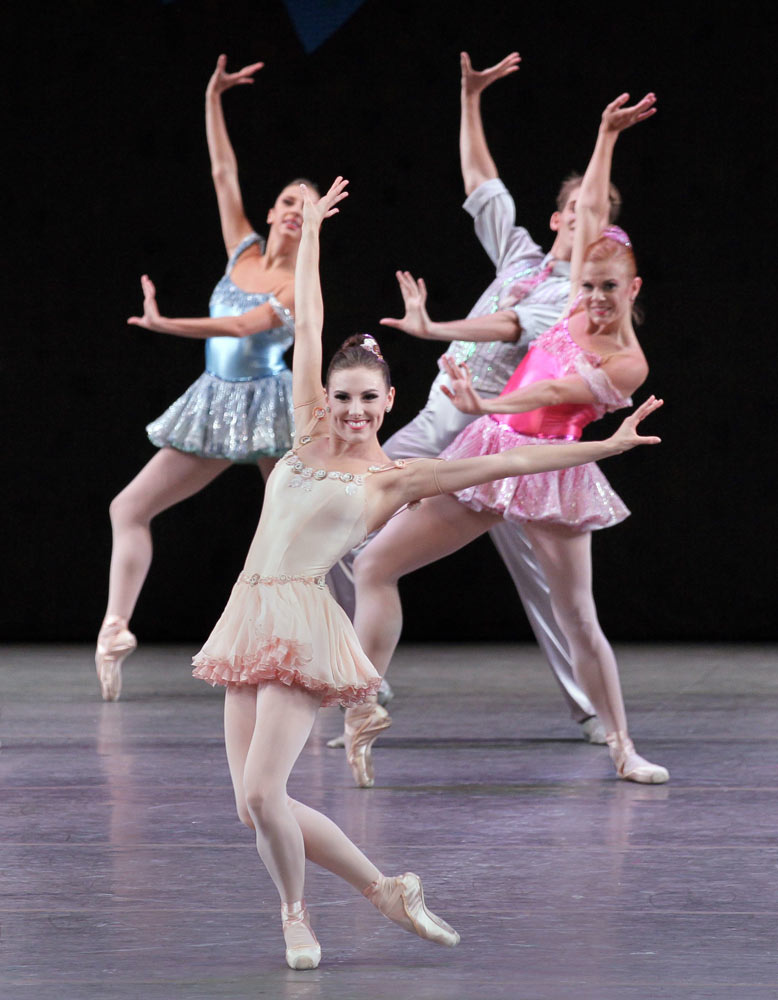
The ballet really hit its stride, though, in the second half when the four leading dancers (three women and a man) took center stage. Tiler Peck held the audience breathless as she elegantly strolled onstage, enchanted by the man of her dreams (Robert Fairchild), to the melancholy of “The Man I Love.” With its evocative music and inspiring choreography originally made on Patricia McBride and Jacques d’Amboise, this sensual pas de deux was the most emotionally charged scene of the entire ballet. Peck danced with irresistible zeal, completely surrendering to the music and imbuing every moment of the duet with elegance and charm. She was equally compelling in her solo to “Fascinatin’ Rhythm.”
Ashley Bouder offered a delicious account of the jazzy “I’ll Build a Stairway to Paradise;” and Ana Sophia Scheller shone in the “My One and Only” solo, zooming through its countless vertiginous turns with an effortless style and aplomb. The excellent Fairchild was in total command of his leading male role, which was part hoofer, part Prince Charming.
Peter Martins’ Fearful Symmetries (1990), the second ballet of the program, is set to music of the same title – a propelling and relentlessly intense score by experimental minimalist composer, John Adams. On opening night, the Opera House orchestra sounded like an oversized big band, heavy on brass, wind and saxophones. The persistent rhythms of the music combined with its chugging, insistent beat (courtesy of a keyboard sampler playing percussion sounds) overwhelmed my ears with its unrelenting repetition and harmonic tension.
Popular among the choreographers, the score has inspired nearly a dozen different dance versions, including award-winning choreography by Ashley Page for the Royal Ballet in 1994.
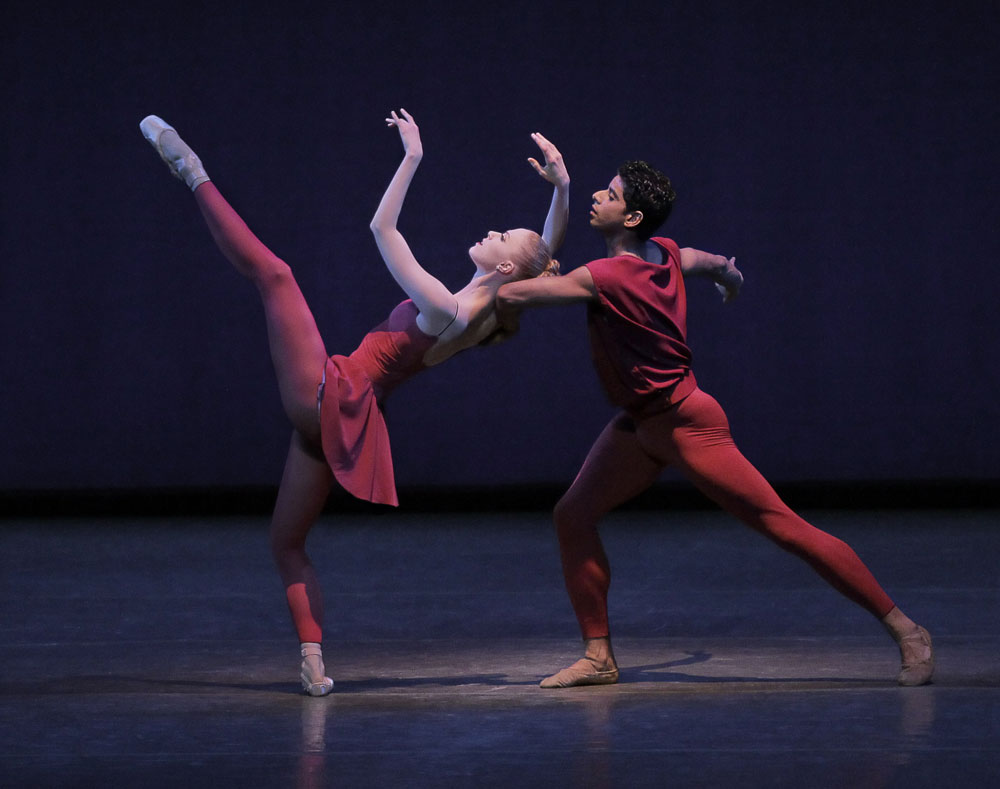
In Fearful Symmetries, Martins conjured an exceedingly propulsive choreography to go hand-in-hand with the dynamics of Adams’ kinetic music. For much of the time the cast, dressed in various shades of red, surged and soared across the stage in diagonal or horizontal patterns, the energy of their rhythmic drive at times exceeded the staggering intensity of the score. At first the action onstage, with its countless entrances and exits, fleeting leaps, and swirling turns, all executed at breakneck speed, sparked my genuine interest, but after a while the repetitiveness of the movements, no matter how flawlessly executed, became as tiresome as the harmonic tedium of the music.
Fortunately, Jerome Robbins’ West Side Story Suite, the final dance of the evening, was anything but tedious. One of the greatest entertainers in ballet, Robbins knew how to keep his audiences awake, engaged, and excited. In 1995, he transplanted his choreography from the 1957 Broadway classic West Side Story to the ballet stage. Choreographed to Bernstein’s original symphonic score, an amalgam of jazz, tuneful melodies, and heart-rending love songs, the new piece was a condensed version of the famous musical; in which one dance number seamlessly moved into another.
In its fast-paced scenario the love story of Tony and Maria is given lesser prominence than on Broadway. West Side Story Suite is mostly about a gang war between the Jets and the Sharks, with its ferocity and intensity, all expressed as pure dance in an absorbing, realistic fashion.
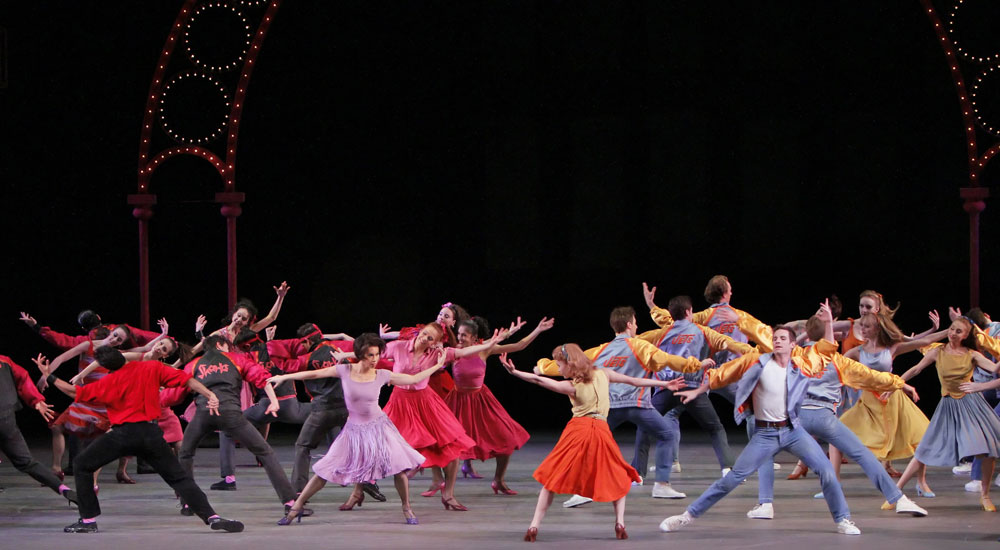
Who knew the NYCB dancers could also sing? On opening night Andrew Veyette was a convincing Riff, the intimidating leader of the Jets. Trying to keep the boiling emotions of his clan in check, Veyette sang the finger-snapping “Cool” with a voice and stylistic assurance of a Broadway pro. The dancer brought the right amount of dramatic flair to his high-flying knife brawl with the leader of the rival Hispanic gang, Bernardo (Justin Peck), in the menacing “Rumble.” The entire cast rose to the occasion in the mambo rivalry of the “Dance at the Gym” scene. But the show belonged to Georgina Pazcoguin, who was sensational as a free-spirited Anita in “America.”










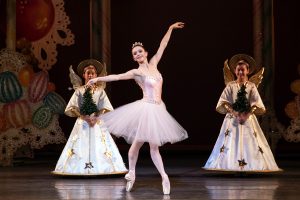
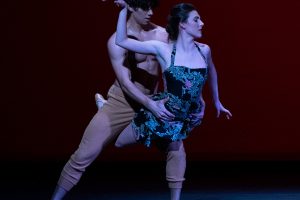

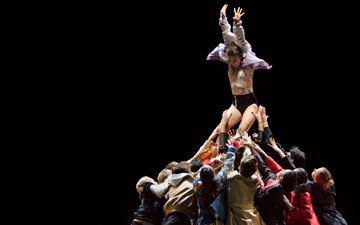

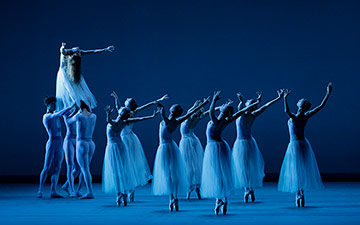

You must be logged in to post a comment.